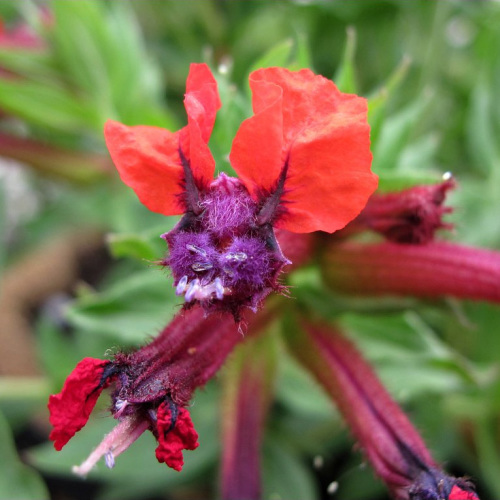
As gardeners, we can truly appreciate the beauty that comes with all of the plants we grow. I thought it would be cool (or should I just say creepy?) to showcase some of the more strange and bizarre plants that are out there. Some of these plants seem to be straight out of a horror movie. Imagine encountering plants that look like bats, eyeballs, and claws. You may not want to walk alone in the garden after seeing these.
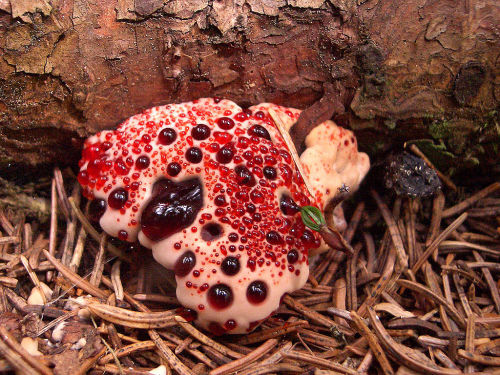
1. Bleeding tooth (Hydnellum peckii)
This beneficial fungus actually “bleeds” bright red juices when it’s young. It grows throughout North America but can be found all over the world. The fungus attaches itself to tree roots and gives out minerals and amino acids. Other nicknames for this fungus include “strawberries and cream” and “the devil’s tooth.”
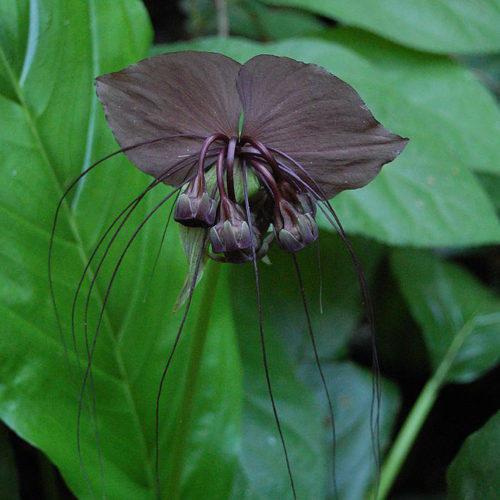
2. Black bat flower (Tacca chantrieri)
This nearly pitch-black plant definitely has a chilling appearance. There aren’t many plants that have ears and whiskers, but the bat flower does. This rare plant grows wild in China but requires careful attention if grown in North America. The batlike flowers can reach 12 to 20 inches in diameter, and the “whiskers” can grow up to a foot long. Other nicknames for this flower include “cat’s whiskers” and “devil flower.”

3. Doll’s eyes (Actaea pachypoda)
This eastern North America perennial, also called white baneberry, has berries that look (too much) like eyeballs, or an alien from a 1950s sci-fi movie. Walking through a forest full of these wouldn’t exactly be a welcoming sight on a fall evening. WARNING: The doll’s eyes plant is very toxic. Ingesting the berries or stems can lead to cardiac arrest and death.
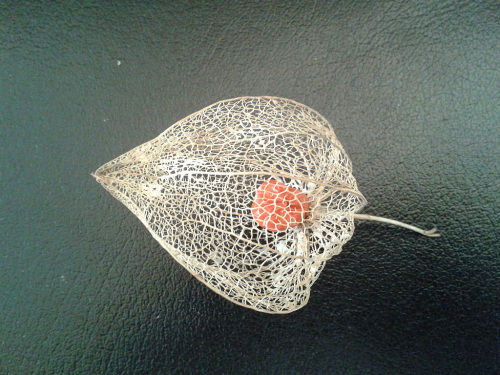
4. Chinese lantern plant (Physalis alkekengi)
The flowers of the Chinese lantern plant look like a delicate paper lantern (and a little like a pumpkin). When the flower dries and its covering goes away, the berry is encased in a skeletal, cagelike covering. The plant grows in most hardiness zones in North America. The scary part? In Japan, the plant’s seeds are used to help guide the souls of the dead.

5. Venus flytrap (Dionaea muscipula)
The Venus flytrap is probably the best known insect-eating plant in the world. In fact, this carnivorous plant’s features are so unique that they’ve even starred in some horror movies! The flytrap’s “jaws” (actually the plant’s leaves) snap shut in less than a second. Though it’s native to North and South Carolina, the plant is grown worldwide.
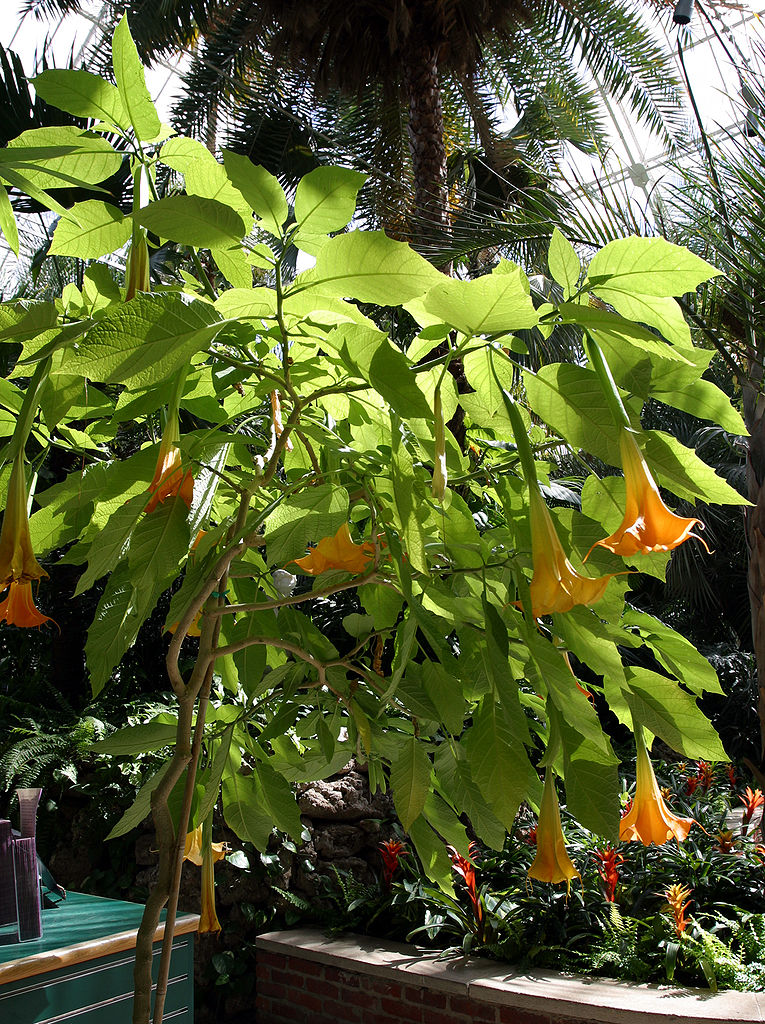
6. Angel trumpet (Brugmansia)
Angel trumpets are flowering shrubs grown in Zones 10 and above. The flowers of the plant are about 8 inches long and can be multicolored at full size. So what’s the scary part? It is said that in South American tribal cultures its hallucinogenic properties were used for sorcery and black magic and to call forth the dead. WARNING: All parts of the plant are extremely toxic.
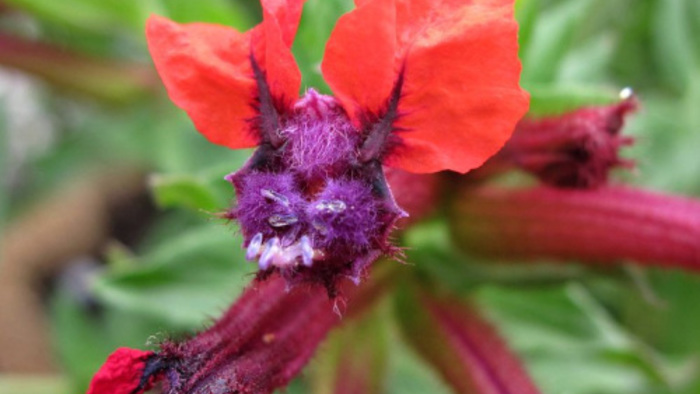
7. Bat face cuphea (Cuphea llavea)
This colorful shrub is named for its resemblance to a bat. The dark purple flower is the face, and the red lobes are the ears. In this case, the “bats” are welcome. The plant thrives in heat, tolerates drought, and attracts bees and hummingbirds.

8. Devil’s claw (Proboscidea parviflora)
This plant shares its scientific name with an unlikely species—Proboscidea, which is an order of elephants! Proboscidea comes from the word proboscis, which means “trunk” or “horn.” Native to Arizona, the seedpods of the devil’s claw look like spiders or sharp hooks. This is actually the way the plant spreads its seeds. The seedpods hook onto the feet of animals, and as they crush it into the ground, the seeds are dispersed. Scary—and it’s named after the devil.

9. Cockscomb (Celosia cristata)
I’ve grown this flower in my garden for the last couple of years, but I didn’t really consider it scary until I thought about what it looked like—a fuzzy brain. If you have any zombies in your garden, this plant makes a perfect treat. Yum!

10. Garlic (Allium sativum)
Garlic has been used for 7,000 years for both culinary and medicinal purposes. No one can deny its antibacterial, antiviral, and antifungal properties. Of course, not everyone is a fan of garlic’s taste or distinctive smell. So why is this plant on the scary list? One word: vampires. I want you to be safe from our blood-sucking friends, so put it around your bed, attach it to your garden tools, or simply wear it over your neck.
Fine Gardening Recommended Products

Organo Republic 16 Perennial Wildflower Seeds Mix for Indoor & Outdoors
Fine Gardening receives a commission for items purchased through links on this site, including Amazon Associates and other affiliate advertising programs.

Corona E-Grip Trowel
Fine Gardening receives a commission for items purchased through links on this site, including Amazon Associates and other affiliate advertising programs.

Gardener's Log Book from NYBG
Fine Gardening receives a commission for items purchased through links on this site, including Amazon Associates and other affiliate advertising programs.




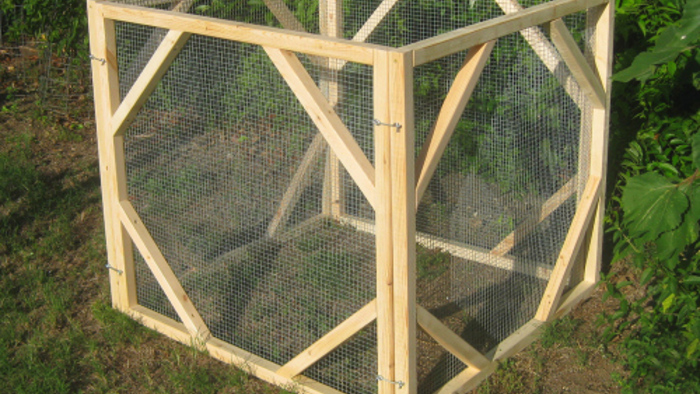














Comments
Log in or create an account to post a comment.
Sign up Log in